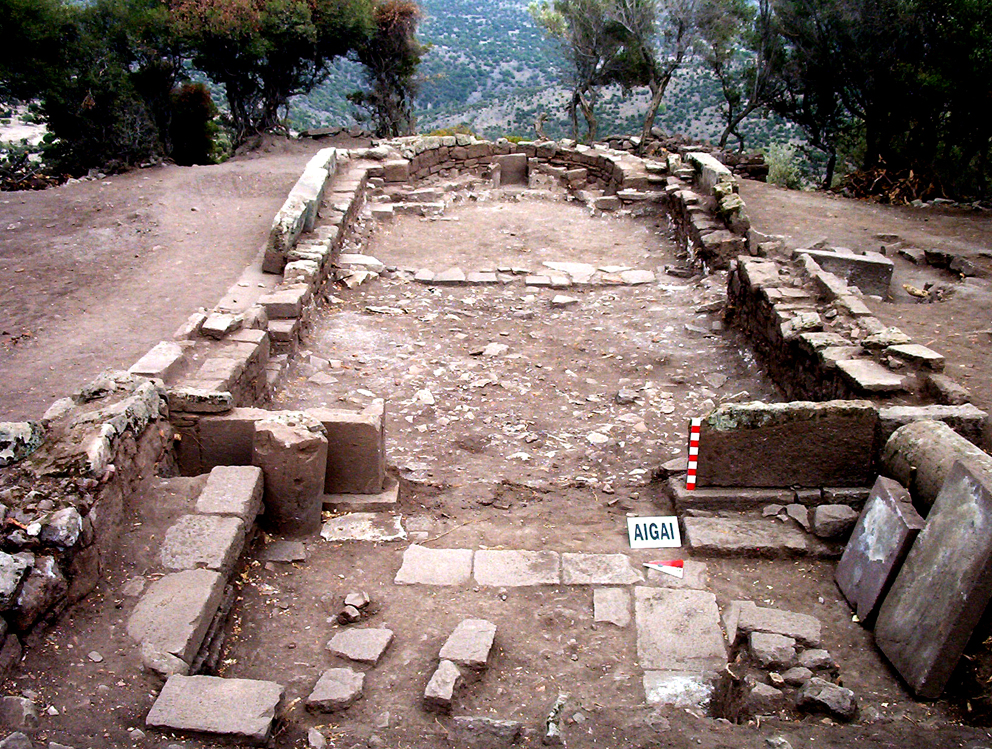
After the Aigai was abandoned in the third quarter of the 3rd century CE, settling started again in the late 12th century CE. In the council lists containing medieval historical data, the name Aigai is mentioned as one of the auxiliary bishops of Ephesus, affiliated to the Asia Diocese. Name of the city is also in councils of 451 / Khalkedon and 787 / II. Nikaia. However, it is not seen in the bishop lists after 1230. A small church was built in the city and almost all of the public buildings were demolished to collect lead binders during this short period of settlement.
The most important Byzantine structure, the church located in the flat area east of Gate of Demirkapı has been completely unearthed during the excavations in the city. Although there wasn’t a large settlement in Aigai in the 12th and 13th centuries CE, a small number of subjects of the church had lived. The East Church, one of the important buildings of this period, is located close to the city wall. The building measuring 14,60×6,20 m, has a single nave, an apse in the east and an entrance facing to the west. The tombs at the northeast corner of the apse façade suggest that the building served a small Christian community as a burial chapel.
